European Carriers: From Costly Traditions to Low Cost Uniformity
Photo: weapons.technology.youngester.com
Aircraft carrier "Charles de Gaulle"
nuclear power plant (R91), France
The naval powers of Europe, having or having once had classic strike aircraft carriers in the fleets, are gradually abandoning this type of ships in favor of smaller, but multifunctional ones. For large players, such as the United Kingdom and France, this process is either painful or has not started yet. Countries with more limited financial resources have already reoriented their shipbuilding programs towards combining the strike aircraft carrier with the universal landing craft, since building and maintaining both of them is too expensive. The inclusion of most European powers in the affiliate program for the supply of American F-35 fighter jets will allow equipping these combat units with an acceptable strike potential.
European aircraft carrier forces: picture and dynamics
The state of the aircraft carrier forces of Europe was significantly influenced by two factors: the gradual withdrawal from the European fleets in the 2000-ies of aircraft carriers of the old construction (even physically outdated and having the potential for limited use or modernization) and the extremely small introduction of new combat units instead same profile.
So, Great Britain got rid of two of its three Invincible type aircraft carriers:
head Invincible was decommissioned fleet in August 2005, Ark Royal - in March 2011. The remaining Illustrious in the same 2011 was deprived of Harrier II type attack aircraft and converted into a helicopter carrier. Currently, the British Navy does not have a single carrier ship for carrier-based aircraft.
France removed both Clemenceau aircraft carriers from the fleet:
in 1997, Clemenceau itself was bred; in 2005, Foch (sold to Brazil). In 2010, the fleet left the helicopter carrier Jean d'Arc. Instead, only one ship Charles de Gaulle (2001) was introduced.
Spain in February 2013, due to financial difficulties, removed the Principe de Asturias aircraft carrier from the fleet,
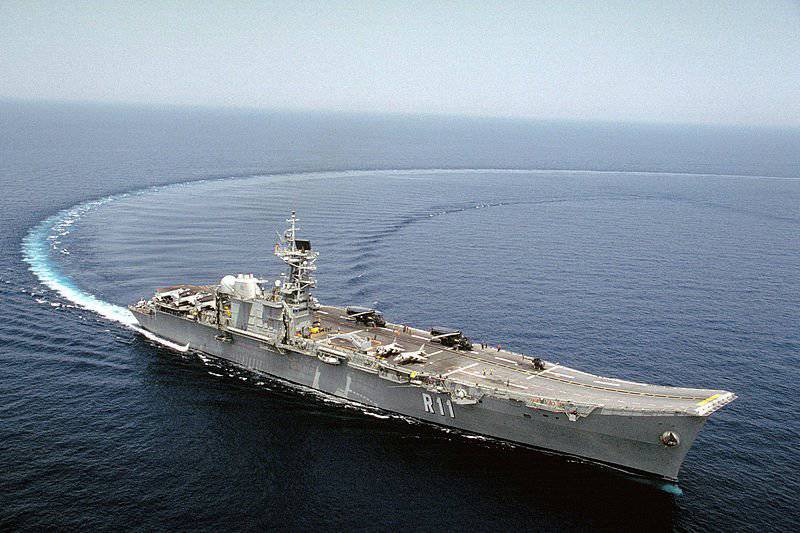
built only at the end of the 1980's. As a result, the Spanish fleet has only one large aircraft carrier, the Juan Carlos I, taken into service in the autumn of 2010.
Against this background, Italy looks like an exception, which, despite the military budget cuts that were repeatedly announced in 2012 and the beginning of 2013, still retains the aircraft carrier Giuseppe Garibaldi as part of the fleet.
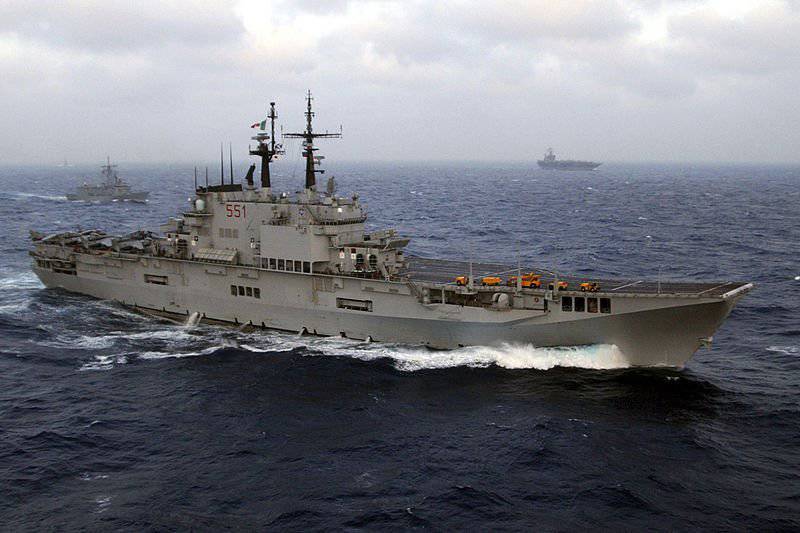
In 2009, the fleet was replenished with a new multi-purpose aircraft carrier Cavour.
Britain: “cheap imperialist politics”, second edition, abbreviated
Photo: www.buquesdeguerra.com
Aircraft carrier Juan Carlos I (L-61)
Currently, the aircraft crew includes approximately 40 aircraft, including X-NUMX multi-role fighter F-12B Lightning II, multi-purpose helicopters Merlin HAS.35 (AW.1), Wildcat (AW.101) and helicopters of the radar patrol Sea King AEW .159.
The most interesting in the project is the evolution of its weapons. In 2002, the British military, choosing the version of the deck fighter, stopped at the F-35B, which is made according to the STOVL scheme (“short takeoff, vertical landing”).
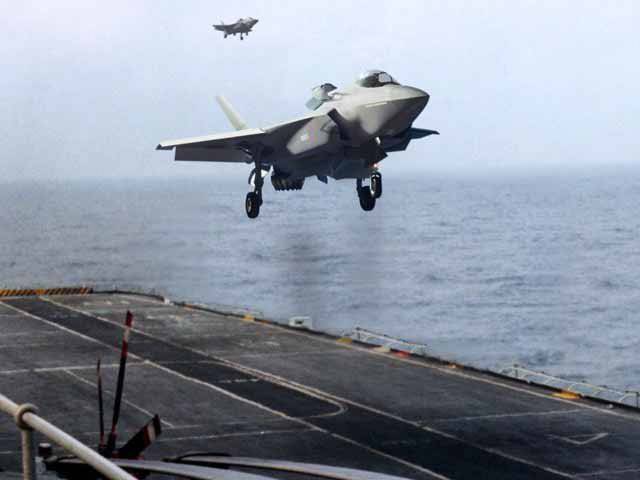
However, around 2009, discussions began about equipping ships with an electromagnetic catapult to launch “full-fledged” deck-based aircraft, including those that could be replaced by F-35 in the future. As a result, in 2010, the military reoriented from the F-35B version to the F-35C version, which the US navy intends to order to replace the F / A-18 multi-purpose fighter jets.
It should be noted that version C has better flight and performance characteristics than version B, in particular, a larger combat radius (1140 km versus 870) and a wider range of combat load. In addition, the F-35C is somewhat cheaper both with the purchase and in operation, which can provide significant savings when operating with a fleet of several dozen aircraft.
However, the limiting factor here is the readiness of the British budget to incur additional costs for re-equipping ships. While in 2010, the cost of re-equipping one ship was estimated at 951 million pounds, while in 2012, the military department already called the figure of 2 billion pounds.
As far as can be judged, it is this factor that played its role against the background of the growing financial difficulties of the British budget. The problem was added by the shift in the time of commissioning of the ship - approximately until 2020. Recall that by that time Britain had already withdrawn the aircraft carrier Ark Royal from the composition, and the military would hardly have accepted the increase in the terms of the construction of the Queen Elizabeth. As a result, in May 2012, the military department returned to the purchase of F-35B, and Queen Elizabeth will receive a springboard for a shortened take-off of these aircraft.
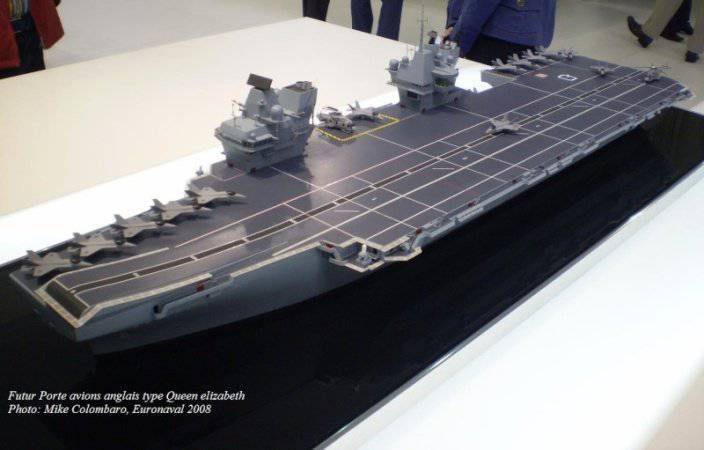
The weak point of the British carrier forces is the situation lighting system. Neither the CVF nor the previous ships of the Invincible type have the capacity to operate a full-fledged long-range radar detection and control aircraft. Such a chance existed if the British military chose an ejection version of the CVF, but at the moment it is lost. Sea King's AEW.2 and ASaC.7 radar patrol helicopters can hardly be considered an equivalent replacement.
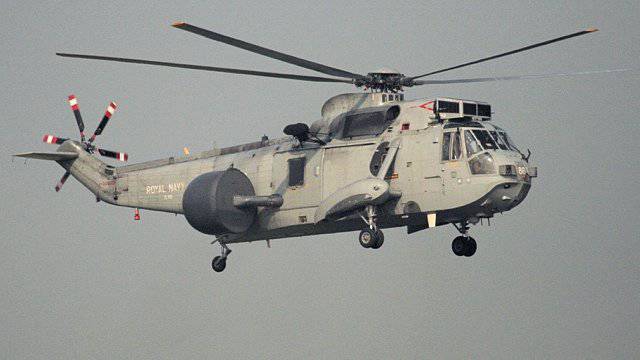
The fate of the second ship of the program, the construction of which was begun in 2011, is not clear (the first metal was cut for hull structures). The final decision on completion will be made after 2015.
Thus, by the beginning of the 2020-s, the UK will have, at best, two new multi-purpose aircraft carriers with F-35B aircraft. The following commissioning dates are realistic: Queen Elizabeth - not earlier than 2020, Prince of Wales - a few years later. However, in case of further growth or at least preservation of budgetary problems, the second aircraft carrier, if it is completed, can be sold literally from a shipbuilding plant (the most likely buyer is India) or its construction will be stopped altogether.
The second option is fraught with payment of penalties. According to British officials, the ship is more profitable to complete than to pay shipbuilders for abandoning it. In 2011, this was explicitly stated by British Prime Minister David Cameron.
The situation is increasingly reminiscent of the interwar period, when Great Britain, gradually losing world leadership, went to reduce the fleet and, more importantly, to limit its construction during the Washington Maritime Agreements 1922, to save money. In the 1930s, this behavior was called “cheap imperialist politics. "
France: a special path at the fork
Photo: digilander.libero.it
Light multipurpose aircraft carrier
Cavour (C550), Italy
France for a long time hatched the idea of building the so-called “second aircraft carrier” - Porte-Avions 2 (the nuclear aircraft carrier Charles de Gaulle is considered the first). However, in April, 2013 in the White Paper on defense issues published by the French Defense Ministry, in the section on the look of the armed forces in 2025, only one aircraft carrier was listed.
There were no official comments, from which two conclusions can be drawn: either the project of the “second carrier” was canceled (or postponed indefinitely, which is the same in current conditions) or the French military, realistically assessing the possibilities of the state budget and shipbuilders, decided that even with the immediate start of work to get the ship ready through 12 years will not work. Even if we take the financial question out of the brackets, the epic with Charles de Gaulle is indicative - it was 12 years from the moment of his laying down to the final commissioning, and in much better economic conditions. It should also be noted that the technical appearance of Charles de Gaulle was generally developed at the end of the 1970-ies, i.e. approximately 10 years before the bookmark, while the final technical aspect of the Porte-Avions 2 is still not defined.
Nevertheless story The evolution of the French “second aircraft carrier” project deserves attention and can be instructive. According to the initial calculations, the ship’s displacement was to be 65 thousand tons, then it was increased to 74 thousand and finally reduced to 62 thousand tons. It was assumed that the aircraft carrier would be a gas turbine, as the unfinished nuclear power plant Charles de Gaulle became real "Headache" in operation. The air group should have included the Rafale 32 fighter, three E-2C Hawkeye long-range radar detection and control aircraft and five NH-90 helicopters.
It should be noted here that the consideration of CVF and Porte-Avions 2 programs in conjunction with each other is more than meaningful. The fact is that in the early stages of the French project (2005 – 2008) the future contractor (the Thales Naval and DCNS consortium) planned to work together with the British shipbuilders from BAE Systems. Moreover, the project was supposed to be so close to the British CVF, that at first even the CVF-FR marking (“French”) was used. However, the project subsequently “expanded”, including in terms of displacement, and in the implementation of the British program, no signs of particular activity were observed.
As a result, France de facto abandoned the CVF-FR project, and the White Book of 2008 had an interesting caveat: “changing economic conditions from 2003 requires new research to choose between classical and nuclear power plants”. Thus, the nuclear version of the Porte-Avions 2 is again accepted for consideration, which seems logical, since the UK does not build nuclear ships, and if the project has finally sold out with the CVF, then you need to weigh all the pros and cons.
Attempts by the UK to find an answer to the question of where to attach, if necessary, the second aircraft carrier of the CVF program, in principle, bring back the idea of ordering the Porte-Avions 2 based on the British project. However, France does not purchase F-35 and focuses on the use of Rafale aircraft as a deck, which will immediately require equipping the ship with catapults (steam, like Charles de Gaulle, or electromagnetic, as assumed for CVF).
Moreover, in the framework of naval cooperation, which involved the creation of single Franco-British aircraft carrier units and the “alternate” use of ships for mutual tasks (such an initiative was put forward in the second half of 2000), the French were still ready to allow the use of F-35C, but not the F-35B. And more importantly, they were not satisfied with the lack of launching catapults on Queen Elisabeth and Prince of Wales.
The fate of Porte-Avions 2 remains, perhaps, the main intrigue of European aircraft carrier programs. However, it is quite obvious that if this ship is built, it will become almost the only new strike ship in Europe with a full-fledged air group, and not with aviation short take-off. In fact, for the next 10–20 years this is Europe’s only chance to build a new “clean” aircraft carrier.
European type of aircraft carrier: unification and wide opportunities
Photo: Suricatafx.com
Comparison of modern decked
fighters
At this stage, we have to state three characteristic points.
First, the main aircraft carrier states of the EU - the United Kingdom and France - were actually left without a carrier fleet, even to the limited extent they had until the dissolution of the Warsaw Pact. Operational readiness of Charles de Gaulle remains quite low, and Britain today does not have a single carrier ship deck aircraft. New ships of full readiness will be able to appear at the earliest in Britain’s 6 – 8 years or in the second half of the 2020s in France.
Secondly, the powers of the “second echelon” (Spain, Italy) are now actually catching up, and in some ways they are superior to the leaders, for example, in the number of combat units of this profile, especially when you consider the use of strike aircraft. However, this is not due to the active implementation of shipbuilding programs, but naturally. However, given the growing financial difficulties of Italy and Spain, it is obviously premature to expect from them in the medium term further growth or even maintain the number of active aircraft carrier units in the fleets.
Thirdly, there is a clear shift in the needs of fleets from the actual strike aircraft carriers to relatively light multipurpose aircraft carrier ships, often performing amphibious assault missions. Such a ship may carry strike aircraft (short take-off aircraft) or may not carry (as a matter of fact, being a helicopter carrier). But in any case, it has a wide range of capabilities for the transportation of amphibious units. In its philosophy, such a combat unit is closer not to classic attack aircraft carriers (for example, the American Nimitz type, the French Charles de Gaulle, the Russian Admiral Kuznetsov, the Chinese Liaonin or the Indian ships), but rather the American universal landing craft of the Wasp type.
As an example of the application of this approach in shipbuilding, one can cite the French “expeditionary force ships” of the Mistral type (three units),
as well as the previously mentioned Spanish Juan Carlos I and Italian Cavour.
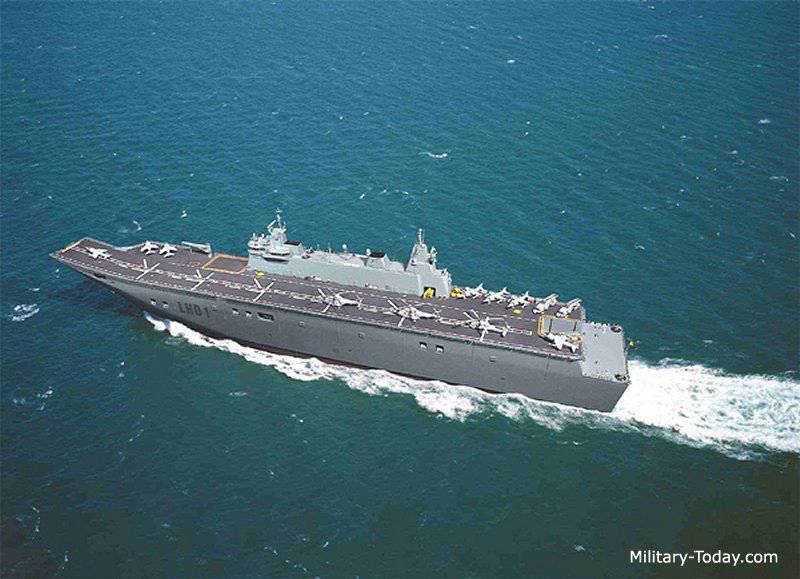
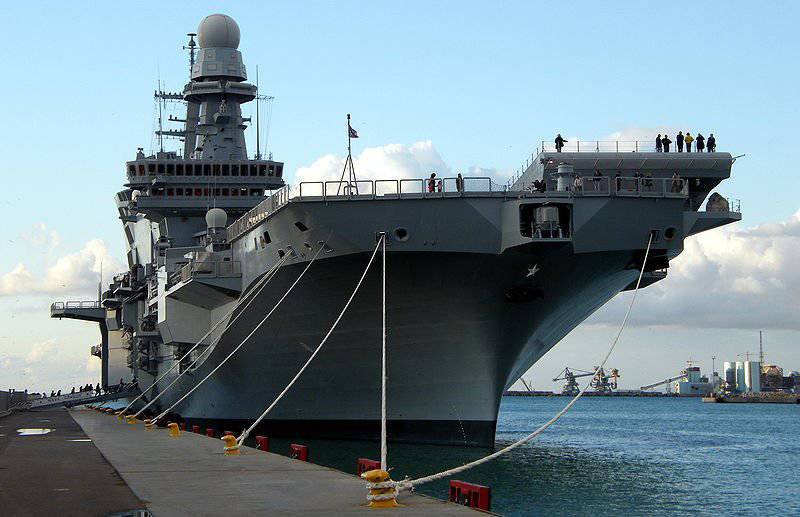
It should be noted that these are new ships built during the last 4 – 9 years and reflecting the current views of naval headquarters on the priorities of military shipbuilding.
Air groups of new ships follow a pan-European approach: earlier ships carried mostly vertical-takeoff and landing aircraft like Harrier,
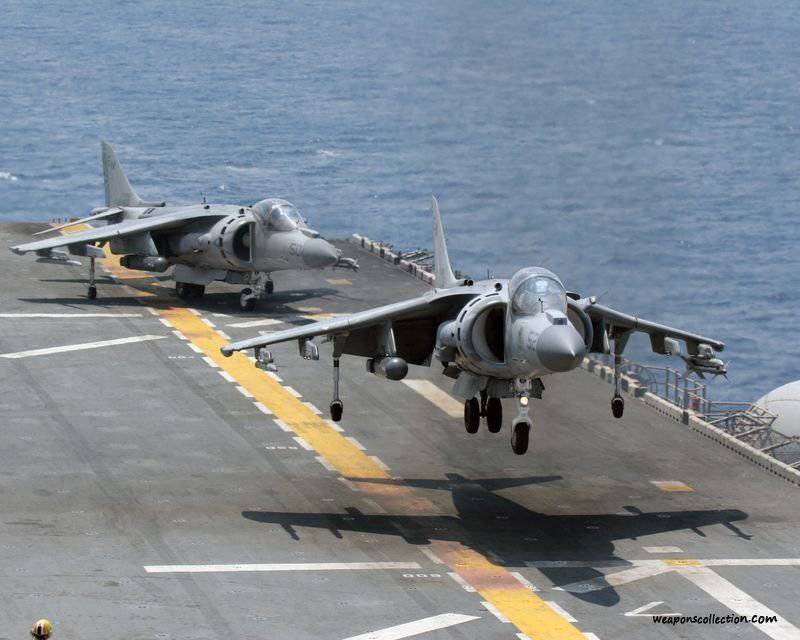
while the new ones (and the same old ones after the upgrade) are the future US carrier-based fighter F-35B.
The traditional exception is France, which used its own aircraft in the fleet: first Super Etendard, now Rafale.
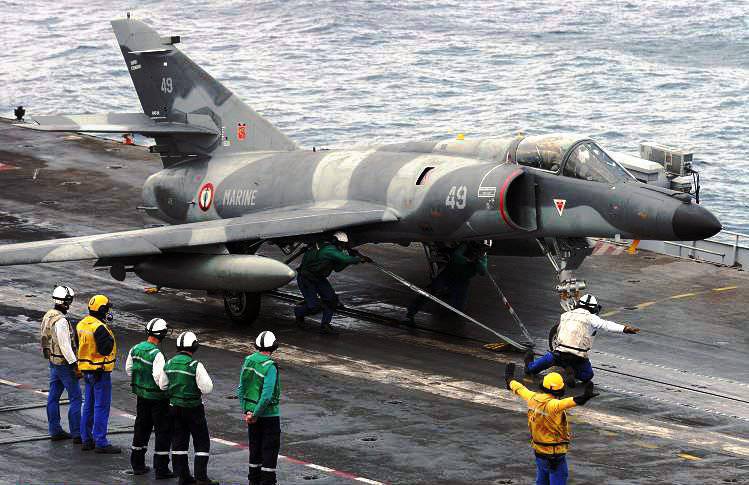
Thus, the creation of a multipurpose, relatively cheap ship with mandatory landing and landing capabilities becomes a common place in the European construction of aircraft carriers. As an alternative to amplification for “second-tier” powers, the empowerment of these ships with the ability to use F-35B short take-off aircraft is considered, which actually turns them into “strike ersatz aircraft carriers”.
France and the United Kingdom, who are trying to carry the burden of their own carrier power, will apparently continue to be, as far as the state of the economy allows them, to strictly separate the strike aircraft carriers themselves and the aircraft carrier landing ships. And if the British can always unify the all-European type in tight budget conditions by switching to a single type of airborne assault ship, then France, which does not have its own short take-off aircraft, will have to at least request a niche F-35B in the United States. Given the prevailing naval traditions and traditions of military procurement, this can cause serious complications.
New "gunboat diplomacy"
Everything that is happening can in principle be called the final bringing of the military fleets of the European NATO countries to the new military-political situation that has arisen after the dissolution of the Warsaw Pact. The likelihood of a major continental conflict in Europe (read - with the participation of Russia) has greatly decreased since the end of the 1980-s, which necessitates a restructuring of the armed forces. A new set of challenges is associated, in particular, with the expansion of the role of expeditionary forces in joint NATO operations (for example, in Yugoslavia in 1999, Afghanistan in 2001, Iraq in 2003, Libya in 2011), and in the independent actions of the European powers to stabilize the situation in the explosive regions of the third world (for example, the French operation in Mali at the beginning of 2013).
On the one hand, this situation does not impose any exorbitant requirements on the level of military expenditures under the threat to the existence of the state (for the fleet, this means a strict limitation of the number of operational ships, and, consequently, increases the requirements for their universality). On the other hand, it shifts the emphasis in the fleet's task system from purely shock functions in a full-scale naval war to providing combined air-sea operations of the armed forces in low-intensity conflicts.
The physical reduction of aircraft carrier fleets, which is unpleasant for the prestige of major powers, can also be viewed from the angle of effectiveness of the use of the remaining or under construction ships. In this sense, a country that possesses universal aircraft-carrying ships with airborne landing functions, for less money, gets more opportunities to use the fleet in the modern version of “gunboat diplomacy”.
Therefore, the reduction of classic strike aircraft carriers in Europe in favor of universal ships with short take-off aircraft should be qualified not only as a compression of the naval potential of the EU powers (at least quantitatively obvious), but also as a reasonably sufficient response to the new challenges facing naval forces in XXI century.
Sources:
http://russiancouncil.ru/inner/?id_4=2302#top
http://korabley.net
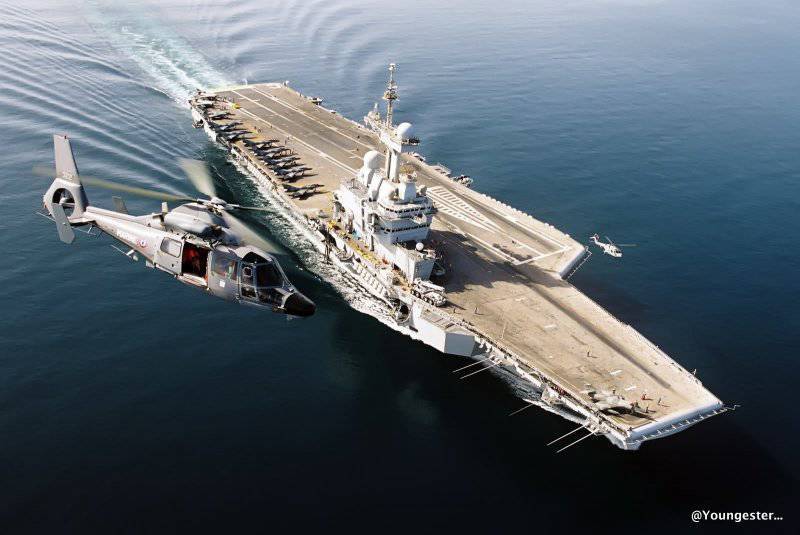
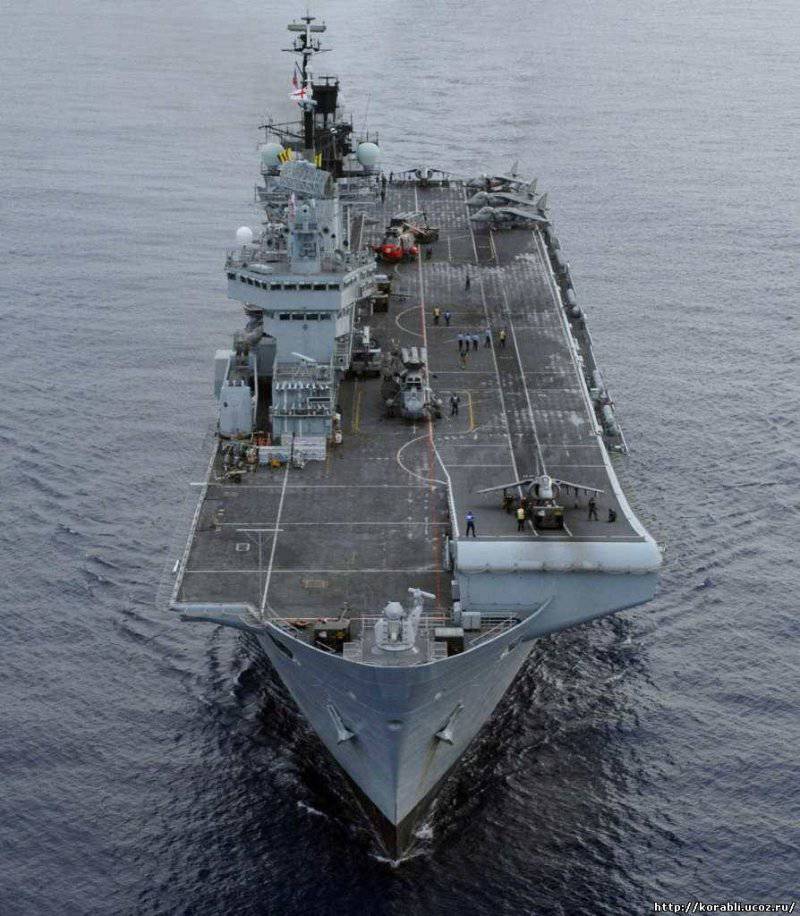
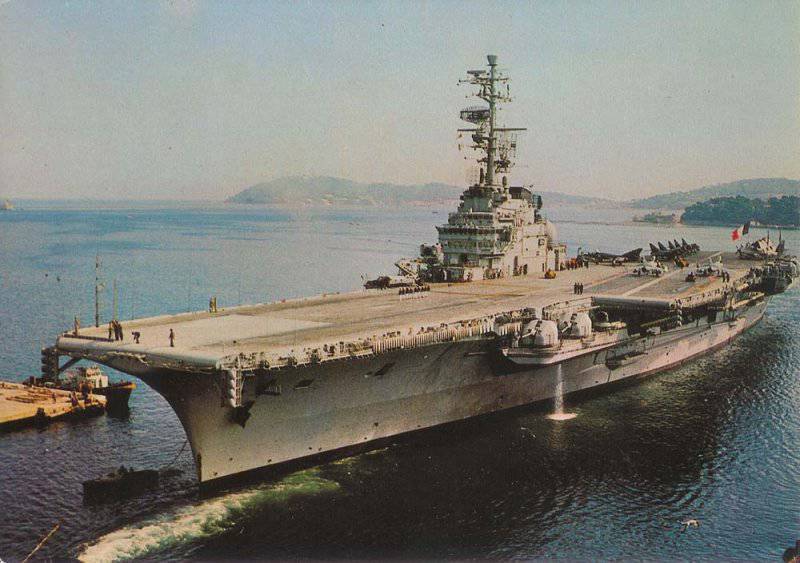
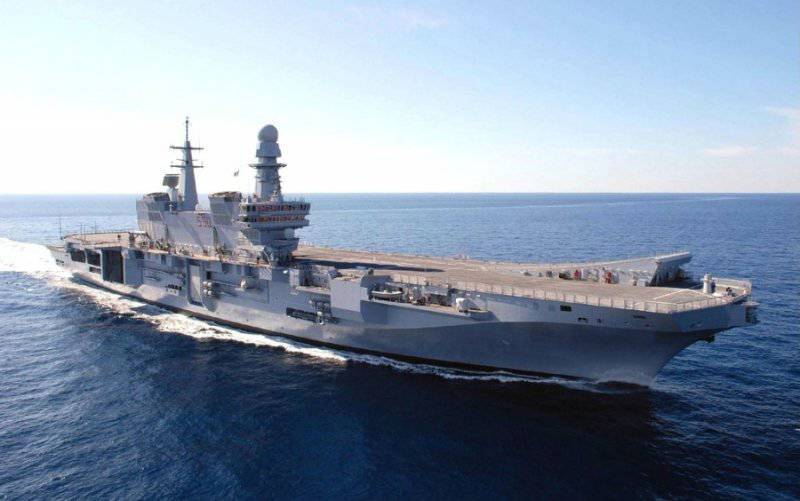
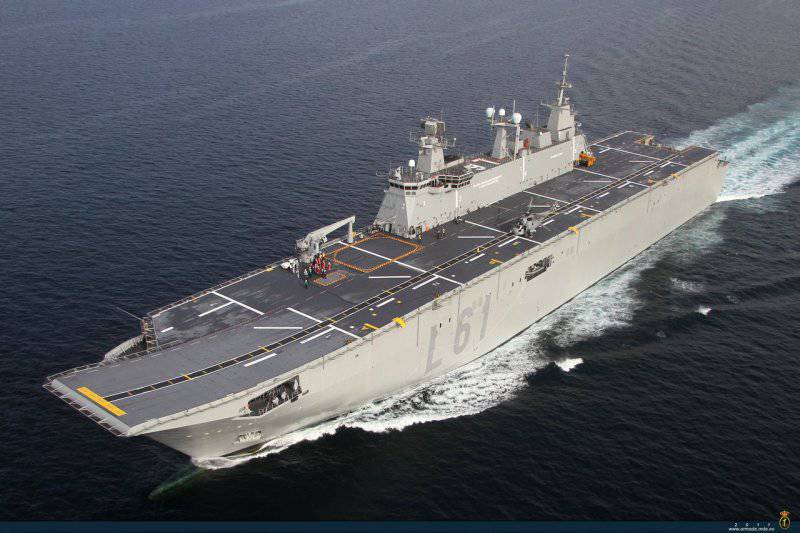
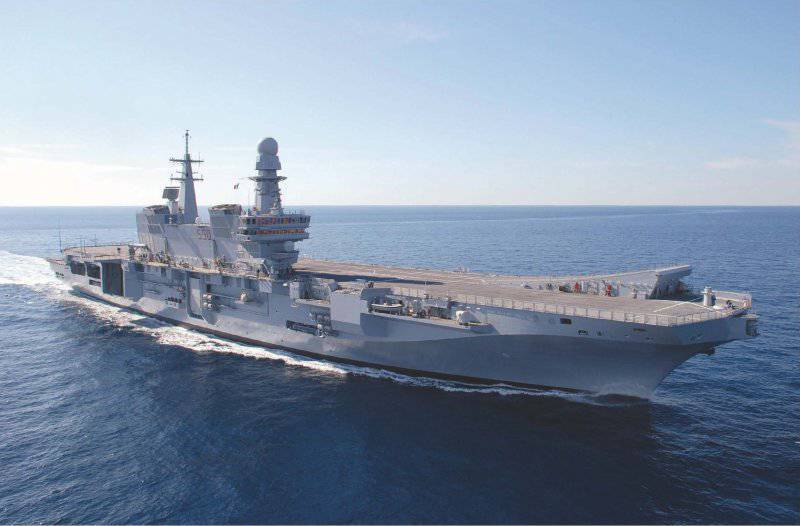
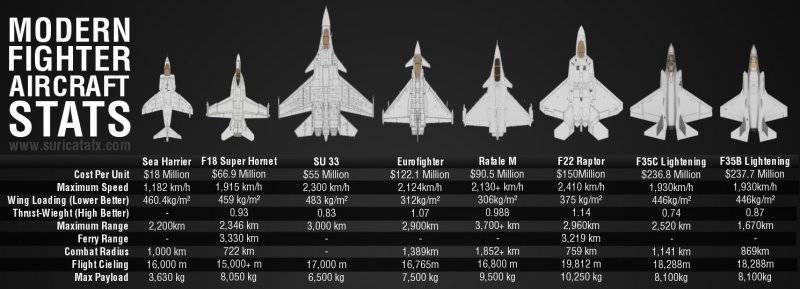
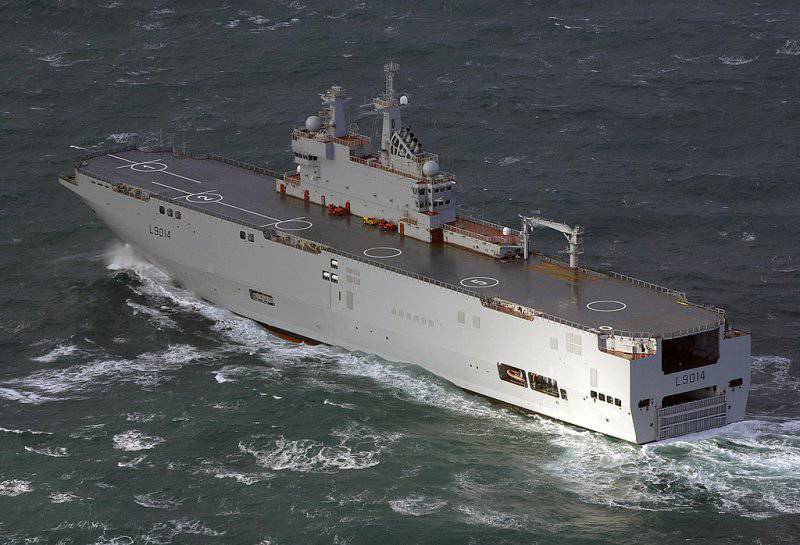
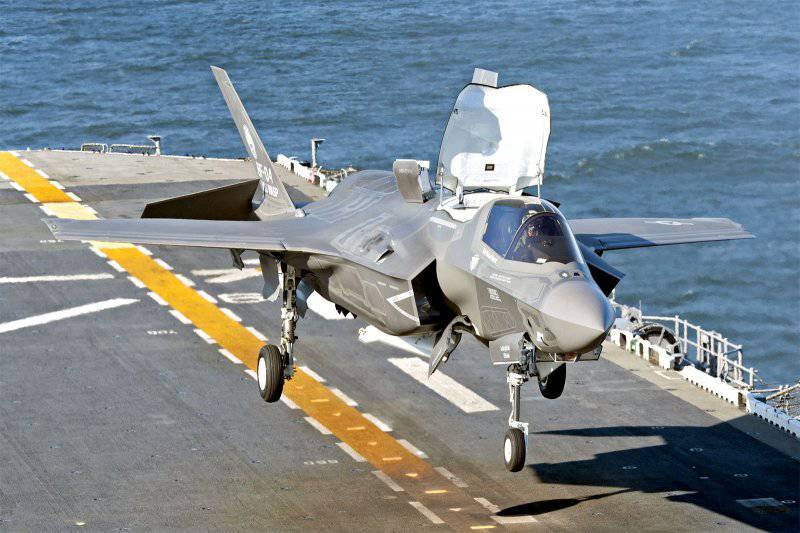
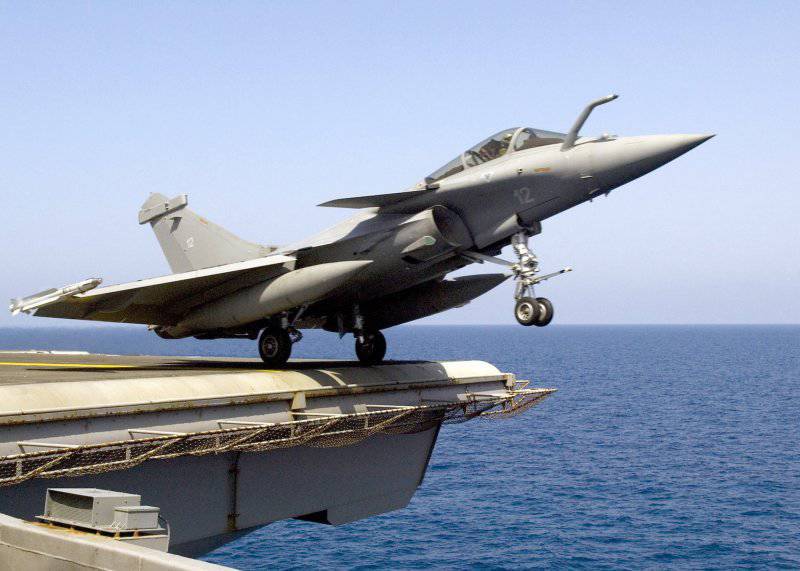
Information